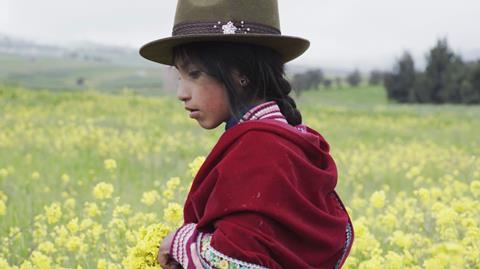
Ecuadorian director Joe Houlberg Silva’s debut feature doc Ozogoche is making its world premiere at this week in IDFA in the Luminous section.
It tells the story of the ‘Cuviví,’ a species of sandpiper bird which migrates every year to the remote Ozogoche lakes in the Andes. Many of the birds then commit suicide. The director uses the birds to look at the challenges facing the local people as many leave the community and their traditional way of life comes under threat.
Silva first pitched the project at BAFICI / Buenos Aries Lab in 2017 where he first received the support of festival strategist Kathleen McInnis. It went on to secure backing from institutions and labs including the Ecuador Film Fund, the IDFA Bertha Fund and the Doha Film Institute.
The documentary director talks to Screen about the concept of cultural suicide, earning the trust of a community and how the pandemic helped the focus of the film to shift.
How did you discover this extraordinary story about the suicidal birds?
I was in Chicago doing my Masters degree [at the Art Institute of Chicago.] I’d been away from home for a few years already. I was reading the news for Ecuador and I read for the first time about these suicidal birds that have come to this lake in Ecuador. Their [normal] habitat is near Chicago, in the central part of North America. Something clicked inside of me. I felt I identified in a way with these birds. They were migrating. I was away from home. In the winter in Chicago, you’re all depressed, nostalgic and you can’t go out.
Something I have thought about when I was making the movie is that when you leave home, even if it isn’t forced, and you live in another country, in a way it is like a cultural suicide. You lose your language. You lose your way of dressing. You lose your loved ones in a way. Even if you’re still in touch, it’s different.

How did the film come together?
When I went back to Ecuador, the first thing I did was to go to Ozogoche and find out what was really going on there. It’s five or six hours from Quito which is the city where I live. I drove there. This project started. I was already thinking about making this parallel between human migration and bird migration but at first I thought it was going to be about the flight of the birds and everything was going to be from the point of view of the birds.
But then you changed the perspective.
Yes, when the pandemic came I had some time to re-think the film. I realised the movie wasn’t really about the journey but it was about the waiting. It wasn’t about the birds but it was about the people. At first I had no intention to do a film about the community but in all my trips to Ozogoche to try to find these birds and to try to take shots of them diving into these lakes, I started becoming friends with the people from the community. They started appearing in all the shots and becoming characters. I realised, ‘OK, of course, this story is not about the birds. It is about these kids’. The people who live in the community are also trying to leave home or are forced to leave home or are looking for a new reality. They have these constant waits. They are waiting for the birds to come the whole year. They are waiting for relatives to come back. They are waiting for something to change. When you’re there, there is this different rhythm. Time is really slow there.
How did you win the community’s trust?
It took time. At first I was another tourist for them. But with time, we started becoming friends. They started inviting us to our homes and suddenly we were so close and so intimate that we had this access to make a very intimate portrait of these families. We were not doing a film looking at someone from the outside. We were inside and they wanted us to tell their story.
Why?
They are forgotten. They are very far away deep in the high mountains of Ecuador and they want people to know they exist.























No comments yet